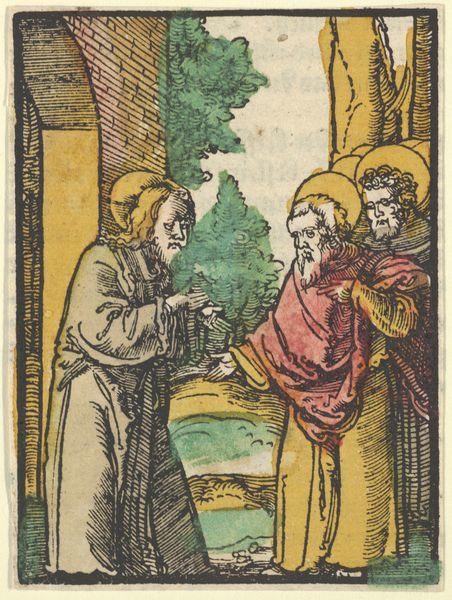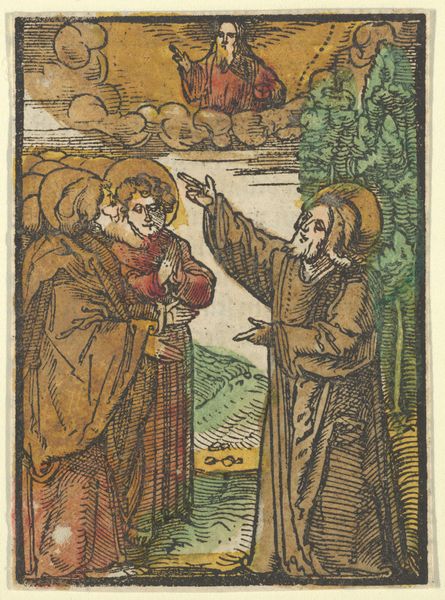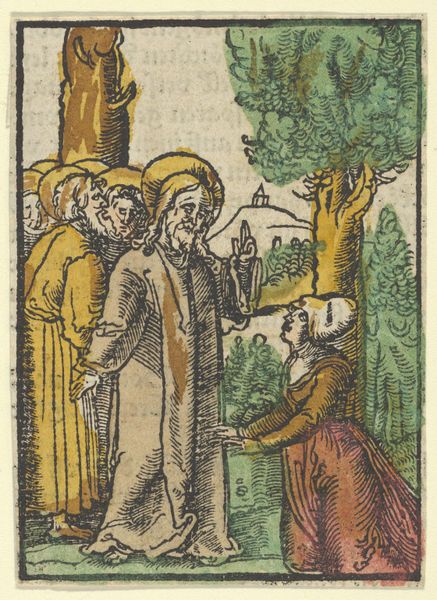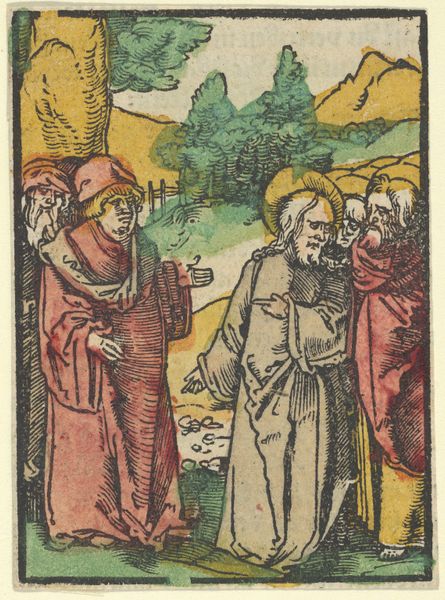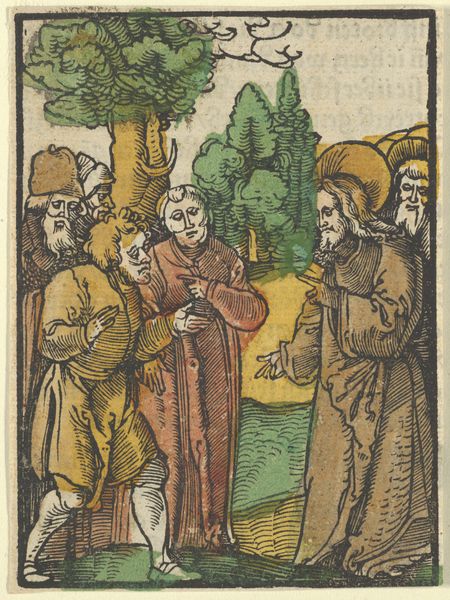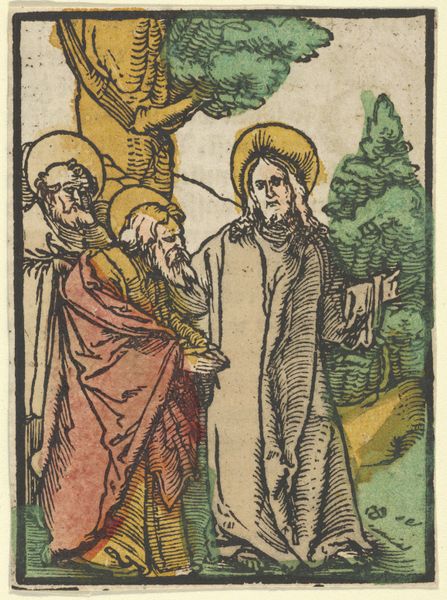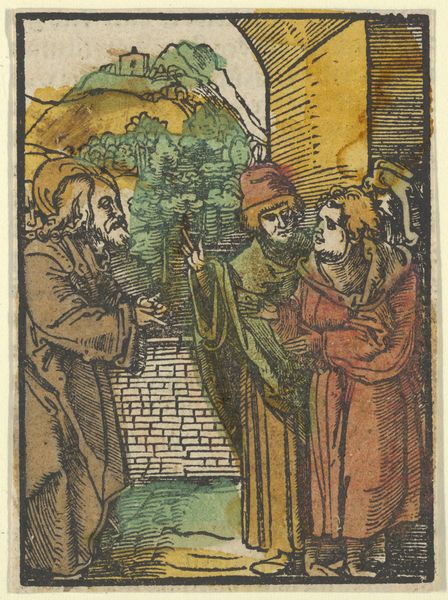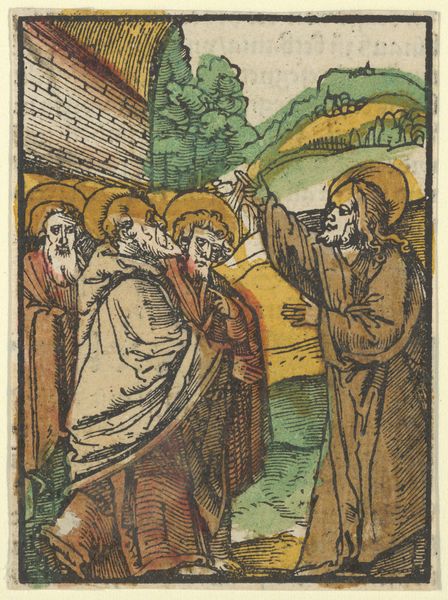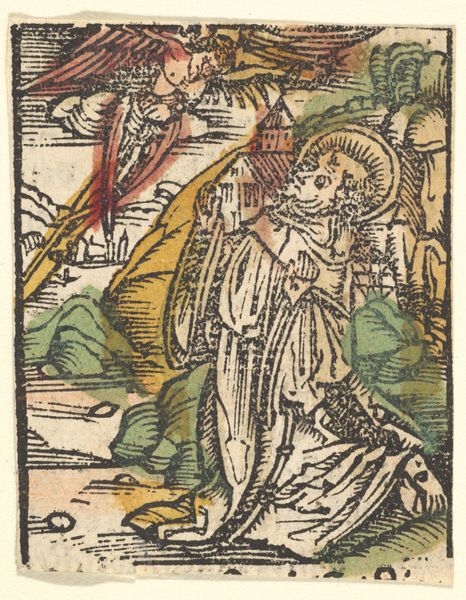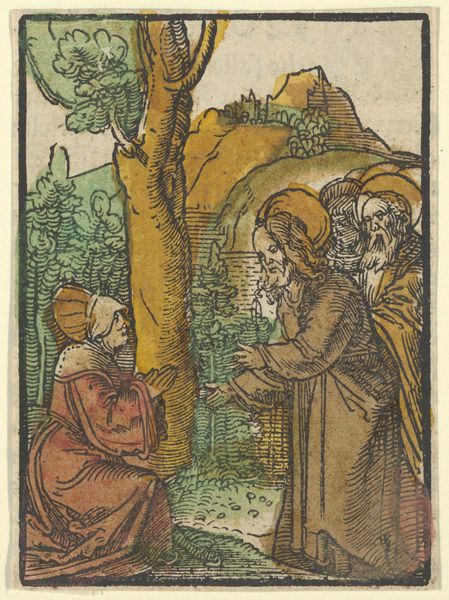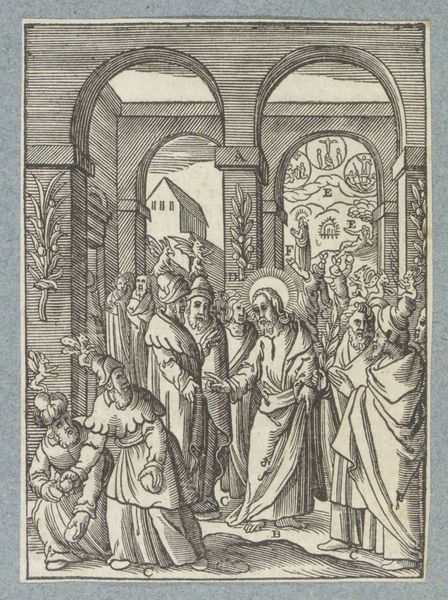
Parable of the Pharisees and the Tax-Collector, from Das Plenarium 1517
0:00
0:00
drawing, print, woodcut
#
drawing
#
narrative-art
# print
#
figuration
#
coloured pencil
#
woodcut
#
history-painting
#
northern-renaissance
#
christ
Dimensions: Sheet: 3 11/16 × 2 11/16 in. (9.4 × 6.8 cm)
Copyright: Public Domain
Curator: This woodcut, entitled "Parable of the Pharisees and the Tax-Collector, from Das Plenarium," was created around 1517 by Hans Schäufelein and is currently housed at The Metropolitan Museum of Art. What's your initial reaction to it? Editor: My first impression is of the almost clashing colours; the pinks, yellows and greens aren’t colours that immediately make sense, but add to an overwhelming and slightly unsettling impression of societal friction. Curator: Yes, and considering this is a woodcut, the physical process of carving and printing lends itself to bold, simplified forms and color choices. Let’s think about the intended audience for something like this in 16th century Europe: broad distribution of biblical teachings via affordable, reproducible imagery. We need to remember these were mass-produced and relatively accessible objects! Editor: Precisely. And to go deeper, these prints often served didactic functions within the context of social reform. Think about it—the Reformation was gaining momentum, challenging established hierarchies of the church. Schäufelein, through visual storytelling, is engaging in debates about religious authority and morality by rendering this specific parable. How does it depict power and piety, who does he critique or valorize? Curator: If you look closely, the lines of the cut seem quite rough but intentional, to demonstrate in detail how some garments are fancier than others, indicating material status, which could add to the contrast of righteousness. It all contributes to a sense of immediacy, even urgency, in conveying this religious message. It doesn't read like it was intended for high art consumption; more like an artisan produced the print for popular use. Editor: That’s a solid point about material indicators. I also see a direct challenge of social performance. The pharisees are visually framed and condemned for outward shows of religious virtue that mask interior vice, versus the tax collector, who is an outcast, who is praised because of inner humbleness and self-knowledge. I think, given the art's social moment, Schäufelein makes very loaded comments regarding social identity and power. Curator: This piece shows the accessibility of printing practices within religious teaching. Considering its historical and artistic relevance and using what it communicates about production, I think the method underscores the very narrative depicted within it, giving even greater agency to that moment of history. Editor: Definitely. Considering these kinds of works and their makers provides vital entry points into reassessing long-held conceptions of art history and power, where both form and content intertwine.
Comments
No comments
Be the first to comment and join the conversation on the ultimate creative platform.
